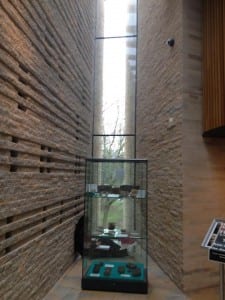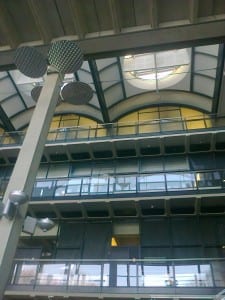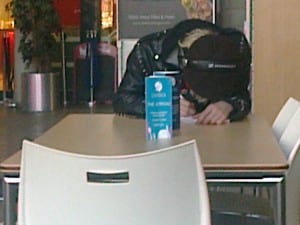While walking around The Collection for the first time, I was instantly drawn to the space of The Collection’s cafe.
The Cafe is a very busy place giving the people there not only a chance to view the performance but even be part of it, if our group wanted that to be the case. That is the first thing that drew me to this Cafe. It is already a busy working environment, to see a performance there would be in an interesting contrast.
The Cafe responds to the polish directors Grotowski’s productions of creating a lived in environment. We like Grotowski could create a performance where the actors are sitting in amongst the audience.
As I first walked in I saw the different levels around the cafe.
Just by walking in we see three levels, with very high ceilings. I thought how much a performance would be able to move in this space. A performance could move into the three areas and show their performance by what level of the space they are in. I enjoyed the deep contrast between the high open space full of light to the bottom level which is low ceilings, a small space which is quite dark.
To use the space as a symbolic piece for the performance is something I want to keep in mind.
Along with the different levels, there are also contrasts of space. In these big windows in the cafe you could look across and see the start or end of a performance outside and make it move inside. Even if you start outside people would still be able to see and wonder about the performance.
Thus I don’t think the performance moving from place to place would be jarring but move fluidly.
I believe with these different levels and different places the Cafe would be an excellent place to put the performance with so many ways to get the space to interact and work with the performance.
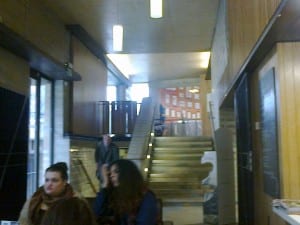

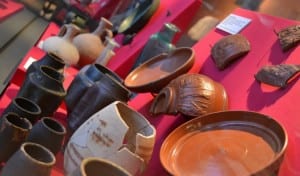
![DSC_0026[1]](https://sitespecific2013dhu.blogs.lincoln.ac.uk/files/2013/01/DSC_00261-300x65.jpg)

